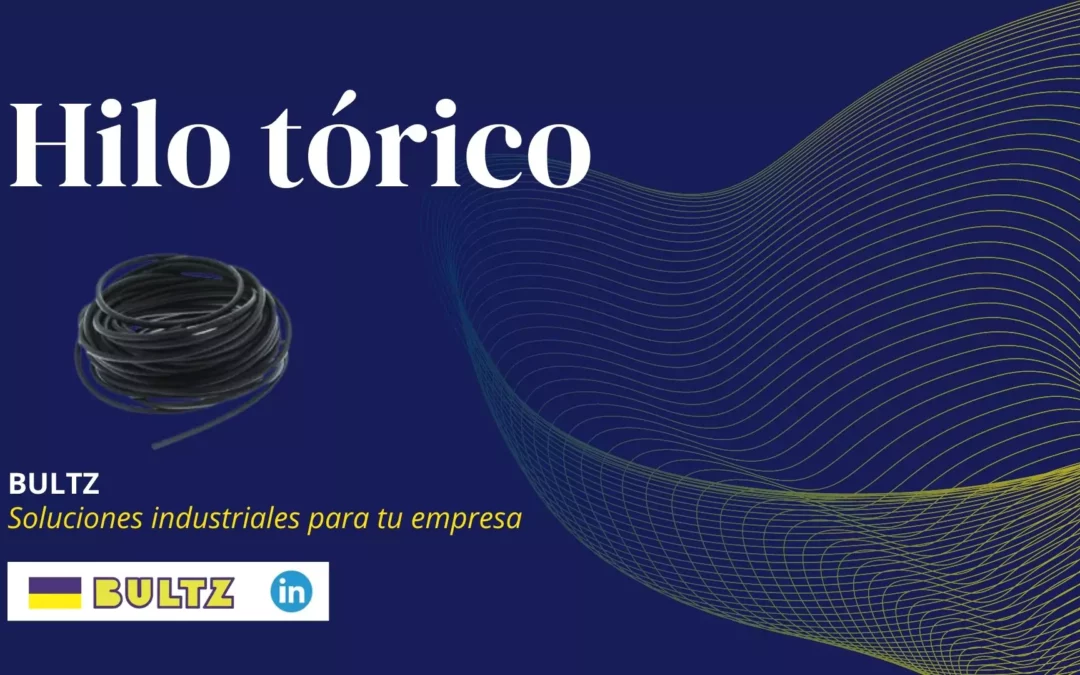What is O-Ring Cord
O-Ring cord is used for custom manufacturing of O-rings for any diameter. It is highly useful in cases where, for any reason, standard O-rings do not fit a particular application. It’s very common to purchase O-Ring cord and adjust it to the correct size needed by the company.
This adaptability makes them very versatile when used in any industrial process requiring a good seal. Like O-rings, they are a popular solution for static sealing.
Where They Are Used and Their Functions
O-Ring cord is used to create a custom O-ring. This O-ring created from the cord serves as the seal between two parts that need to certify their seal for proper functioning. In industrial processes involving fluids, whether in the form of gas or liquids, a hermetic seal must be certified for several reasons:
- Maintaining fluids at their temperature.
- Ensuring employee safety.
- Facilitating maintenance tasks.
How to Properly Build a Seal Using O-Ring Cord
The first thing to consider when replacing an O-ring with a cord is that careful attention is needed when cutting to the exact size. It is not recommended to use the O-ring to be replaced as a reference for this initial step, as it will be elongated and deformed. Once you have the O-Ring cord of the appropriate diameter, you need to take the exact measurement and make a straight (perpendicular) cut to the cord so that the two faces fit together properly during bonding. To bond the two faces, you need to use Cyanoacrylate adhesive.
This adhesive should be used to bond the two faces of the O-Ring cord, forming a seal. It dries quickly, and it’s important to ensure no adhesive residues are left on the seal (for it to function correctly). You can sand the seal with sandpaper to remove any adhesive residues.
O-Ring cord is used for custom manufacturing of O-rings for any diameter. It is highly useful in cases where, for any reason, standard O-rings do not fit a particular application. It’s very common to purchase O-Ring cord and adjust it to the correct size needed by the company.
This adaptability makes them very versatile when used in any industrial process requiring a good seal. Like O-rings, they are a popular solution for static sealing.
Where They Are Used and Their Functions
O-Ring cord is used to create a custom O-ring. This O-ring created from the cord serves as the seal between two parts that need to certify their seal for proper functioning. In industrial processes involving fluids, whether in the form of gas or liquids, a hermetic seal must be certified for several reasons:
- Maintaining fluids at their temperature.
- Ensuring employee safety.
- Facilitating maintenance tasks.
How to Properly Build a Seal Using O-Ring Cord
The first thing to consider when replacing an O-ring with a cord is that careful attention is needed when cutting to the exact size. It is not recommended to use the O-ring to be replaced as a reference for this initial step, as it will be elongated and deformed. Once you have the O-Ring cord of the appropriate diameter, you need to take the exact measurement and make a straight (perpendicular) cut to the cord so that the two faces fit together properly during bonding. To bond the two faces, you need to use Cyanoacrylate adhesive.
This adhesive should be used to bond the two faces of the O-Ring cord, forming a seal. It dries quickly, and it’s important to ensure no adhesive residues are left on the seal (for it to function correctly). You can sand the seal with sandpaper to remove any adhesive residues.
Hilo tórico: NBR y otros materiales:
Entre los materiales más utilizados en la industria se encuentran el NBR y VQM. También existen de otros materiales, no obstante, en este post vamos a analizar las características de estos materiales
El caucho NBR es el más utilizado para las juntas de estanqueidad estándar, debido a que reúne las características óptimas para ser una solución de garantía.
- Contiene buenas propiedades mecánicas
- Alta resistencia a la abrasión
- Escasa permeabilidad al gas
- Buena resistencia a aceites
- Agua: Max. 80 Cº
En cambio, no es un material resistente a:
- Carburantes con alto contenido aromático.
- Hidrocarburos aromáticos.
- Solventes polares.
- Fluidos hidráulicos.
- Ozono, agentes atmosféricos, envejecimiento.

Silicone Rubber (VMQ)
When it comes to silicone rubber (VMQ), it is worth highlighting that it performs very well with atmospheric agents, displaying great resistance to fluids and gases such as ozone, radiation, etc. Silicone is particularly suitable for use in sectors like the food industry due to its high resistance to radiation and high temperatures. As a disadvantage compared to NBR rubber, one can mention the lack of mechanical properties in silicone, which makes it more often directed towards static sealing.
Resistant to:
- Animal oils and fats
- Water (up to 100°C)
- Atmospheric agents
Not resistant to:
- Silicone oils
- Mineral oils
- Fuels
- Steam at temperatures above 120°C
Freudenberg O-Ring Cord at BULTZ
Freudenberg offers O-Ring cords in a wide variety of materials and features. In addition to the O-Ring cords mentioned, the brand provides numerous sealing solutions, including O-rings, seals, gaskets, etc.
On their website, you can find a seal finder tool that helps you discover the solution that best fits your application.

In BULTZ, we are the preferred distributors of Freudenberg Sealing Technologies. The recognition as a Freudenberg Preferred Partner places us at the highest level as distributors of the brand. Additionally, Freudenberg is one of the leaders in the sector, thanks to its quality, constant innovation, and its global presence.
CONTACT US

